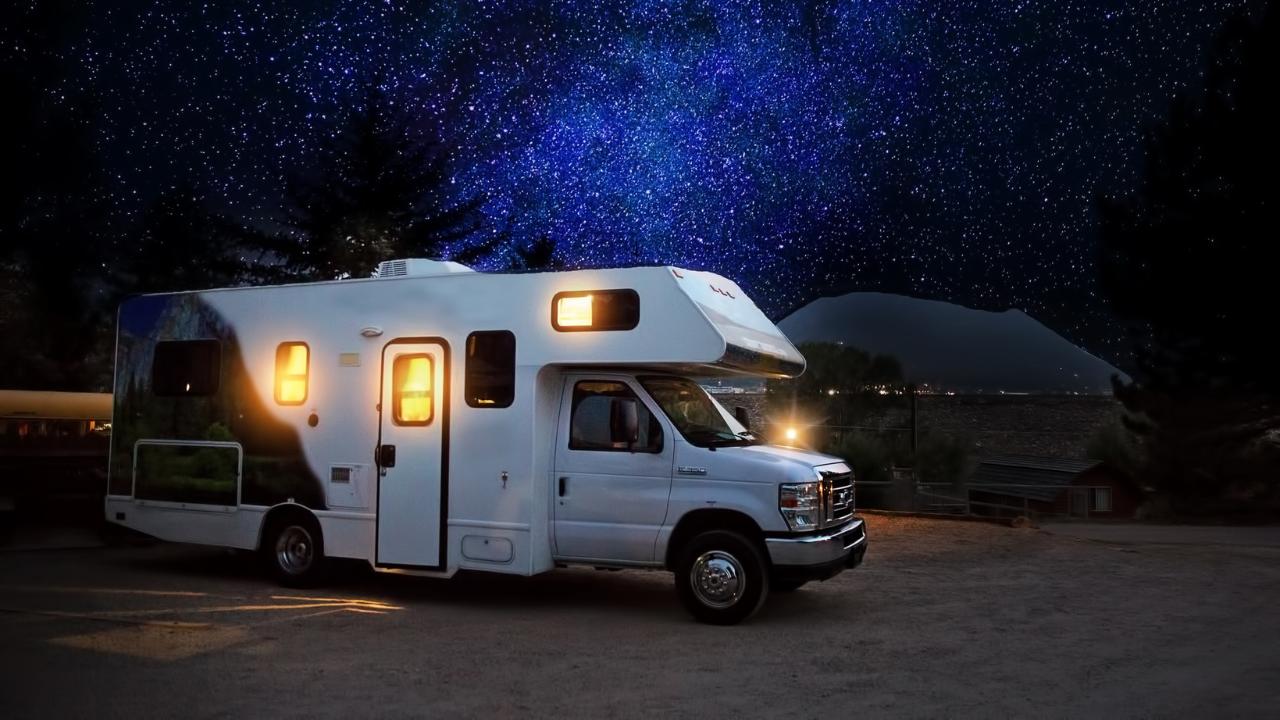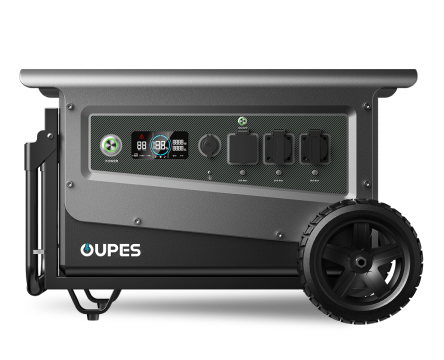
Table of Contents
- Why Winter RV Travel Requires Special Preparation
- Managing Power Off-Grid in Winter
- Using Solar Generators and Portable Power Stations
- Keeping Warm and Safe
- Conserving Energy and Optimizing Appliances
- Water and Plumbing Considerations
- Insulation and Heat Retention
- Winter RV Equipment Checklist
- FAQ
Why Winter RV Travel Requires Special Preparation
Off-grid living in an RV during winter offers serenity and freedom — but it also comes with unique challenges. Cold weather affects battery efficiency, fuel performance, and water systems, while limited sunlight can impact solar charging. Proper preparation ensures comfort, safety, and reliable power throughout your journey.
According to the U.S. Department of Energy (DOE), battery capacity can drop by 20–40% in freezing temperatures. That means RV travelers must plan ahead for power generation, heating, and insulation to prevent system failures.
Managing Power Off-Grid in Winter
1. Understand Your Power Needs
Before heading out, calculate your daily energy consumption. List all appliances and their wattage — heaters, refrigerators, laptops, lights, and water pumps — to estimate your total power requirements. This will help determine how much battery storage and solar input you need.
2. Account for Reduced Solar Output
Solar panels generate less energy in winter due to shorter daylight hours and lower sun angles. In some northern regions, production can drop by up to 50%. Keeping panels clean and angled toward the sun maximizes output.
3. Consider Backup Power Options
While solar should be your main power source, having a backup — such as a portable power station or generator — ensures reliability during cloudy days. A high-quality solar generator with a large battery bank can store enough energy to power essentials like lighting, communications, and small appliances.
4. Power Efficiency Table
| Appliance | Average Wattage | Daily Usage (Hours) | Daily Consumption (Wh) |
|---|---|---|---|
| 12V Refrigerator | 60W | 8 | 480 Wh |
| LED Lights (x4) | 10W | 5 | 200 Wh |
| Laptop | 50W | 4 | 200 Wh |
| Heated Blanket | 100W | 3 | 300 Wh |
| Water Pump | 60W | 1 | 60 Wh |
Total daily use: roughly 1,240 Wh, meaning a 1,500Wh portable power station can sustain a day’s essentials.
Using Solar Generators and Portable Power Stations
1. Benefits of Portable Power Solutions
Portable power stations are a game-changer for off-grid winter living. They allow you to store solar energy and use it to run your RV appliances without relying on fuel-based generators. They are silent, eco-friendly, and maintenance-free — making them ideal for extended travel in remote areas.
2. How to Optimize Charging
- Position solar panels toward the south (in the Northern Hemisphere) at a steeper angle to capture winter sunlight.
- Keep panels free from snow and debris for consistent energy production.
- Charge your portable power station during peak daylight hours.
3. Example: OUPES Solar Generators
A portable power station like OUPES provides off-grid independence during winter RV travel. It can charge via solar panels, car adapters, or AC power and store enough energy for lighting, heating pads, and electronics. Its built-in MPPT (Maximum Power Point Tracking) controller ensures maximum charging efficiency even in weak sunlight.
Keeping Warm and Safe
1. Efficient Heating Options
Traditional propane heaters work well but require ventilation and frequent refueling. Electric blankets and 12V heating pads are safer and energy-efficient alternatives when powered by a solar generator. Use thermal curtains and rugs to retain heat inside your RV.
2. Maintain Proper Ventilation
Even in winter, ventilation is crucial. Moisture buildup from cooking and breathing can lead to condensation and mold. Use vent fans sparingly, or crack a window slightly while using a heater.
3. Emergency Safety
Always keep a carbon monoxide detector and fire extinguisher in your RV. Ensure your smoke alarms are functional before every trip.
Conserving Energy and Optimizing Appliances
1. Switch to Energy-Efficient Devices
Replace incandescent bulbs with LEDs and use low-wattage appliances. A 10W LED light provides the same brightness as a 60W bulb with 80% less energy use.
2. Manage Power Usage Wisely
- Charge electronics during peak solar hours.
- Unplug idle devices to avoid phantom power draw.
- Run high-energy appliances (coffee maker, heater) one at a time.
3. Monitor Power with Smart Systems
Use an energy monitor to track power consumption in real time. Some modern portable power stations offer app connectivity for monitoring charge levels and remaining runtime.
Water and Plumbing Considerations
1. Prevent Frozen Pipes
Frozen water lines are one of the biggest winter RV challenges. Insulate pipes, use heated water hoses, and keep your freshwater tank above freezing temperature by storing it inside the RV.
2. Manage Grey and Black Water Tanks
Keep dump valves closed until the tanks are nearly full, reducing the risk of ice blockages. Add RV-safe antifreeze to holding tanks to prevent freezing.
3. Water Conservation Tips
Use reusable dishes, collect melted snow for washing, and limit shower times. A typical RV water heater uses significant power, so heating water during peak solar hours is most efficient.
Insulation and Heat Retention
1. Add Extra Insulation
Install reflective insulation on windows and vents. Seal gaps with weatherstripping and use insulated window covers to prevent drafts.
2. Skirt the RV
Adding an RV skirt around the base prevents cold air from circulating underneath, reducing heat loss from the floor.
3. Manage Moisture
Use moisture absorbers or a small dehumidifier to maintain indoor air quality and prevent frost accumulation inside windows.
Winter RV Equipment Checklist
| Category | Essential Equipment | Purpose |
|---|---|---|
| Power | Solar generator (e.g., OUPES), extension cables, solar panels | Off-grid electricity and device charging |
| Heating | Propane heater, electric blanket, RV skirt, thermal curtains | Maintain warmth and prevent freezing |
| Water System | Heated hoses, antifreeze, pipe insulation | Prevent frozen lines and tanks |
| Safety | CO detector, fire extinguisher, backup lights | Ensure safety during emergencies |
| Miscellaneous | Snow shovel, tire chains, weatherproof boots | Travel safely in winter terrain |
FAQ
1. How can I keep my RV batteries from freezing?
Store batteries inside the RV or use an insulated compartment. Solar generators like OUPES are built to perform reliably in low temperatures.
2. Can solar panels work in snowy weather?
Yes, but efficiency drops when panels are covered by snow or ice. Keep them clean and angled toward the sun for optimal charging.
3. How much solar power do I need for winter RV living?
For basic needs (lighting, electronics, small heating), a 300–500W solar array combined with a 1,000–2,000Wh battery is sufficient.
4. What’s the safest way to heat an RV off-grid?
Use electric heating pads or blankets powered by solar energy. Propane heaters can be used but require ventilation and carbon monoxide monitoring.
5. How can I extend my off-grid stay during winter?
Use efficient appliances, insulate well, manage water wisely, and rely on renewable power sources like OUPES portable solar generators.
Conclusion
Off-grid RV living in winter can be both rewarding and challenging. By understanding your power needs, optimizing solar energy use, and preparing your RV for cold conditions, you can enjoy a comfortable and sustainable winter adventure. Portable power solutions — such as solar generators and energy-efficient appliances — make off-grid life easier and more reliable. With smart planning and the right tools, you can stay warm, powered, and independent wherever your journey takes you.




























